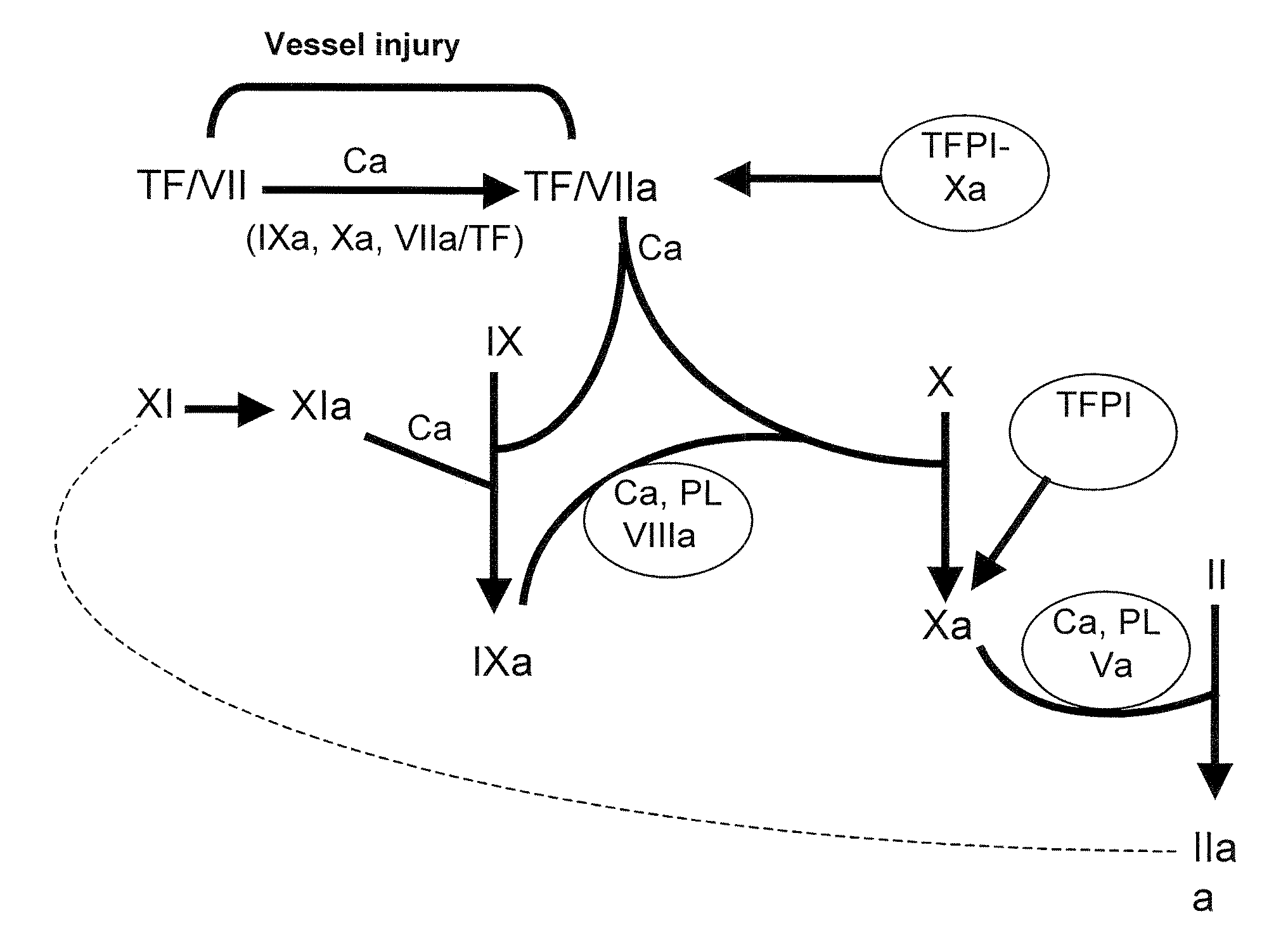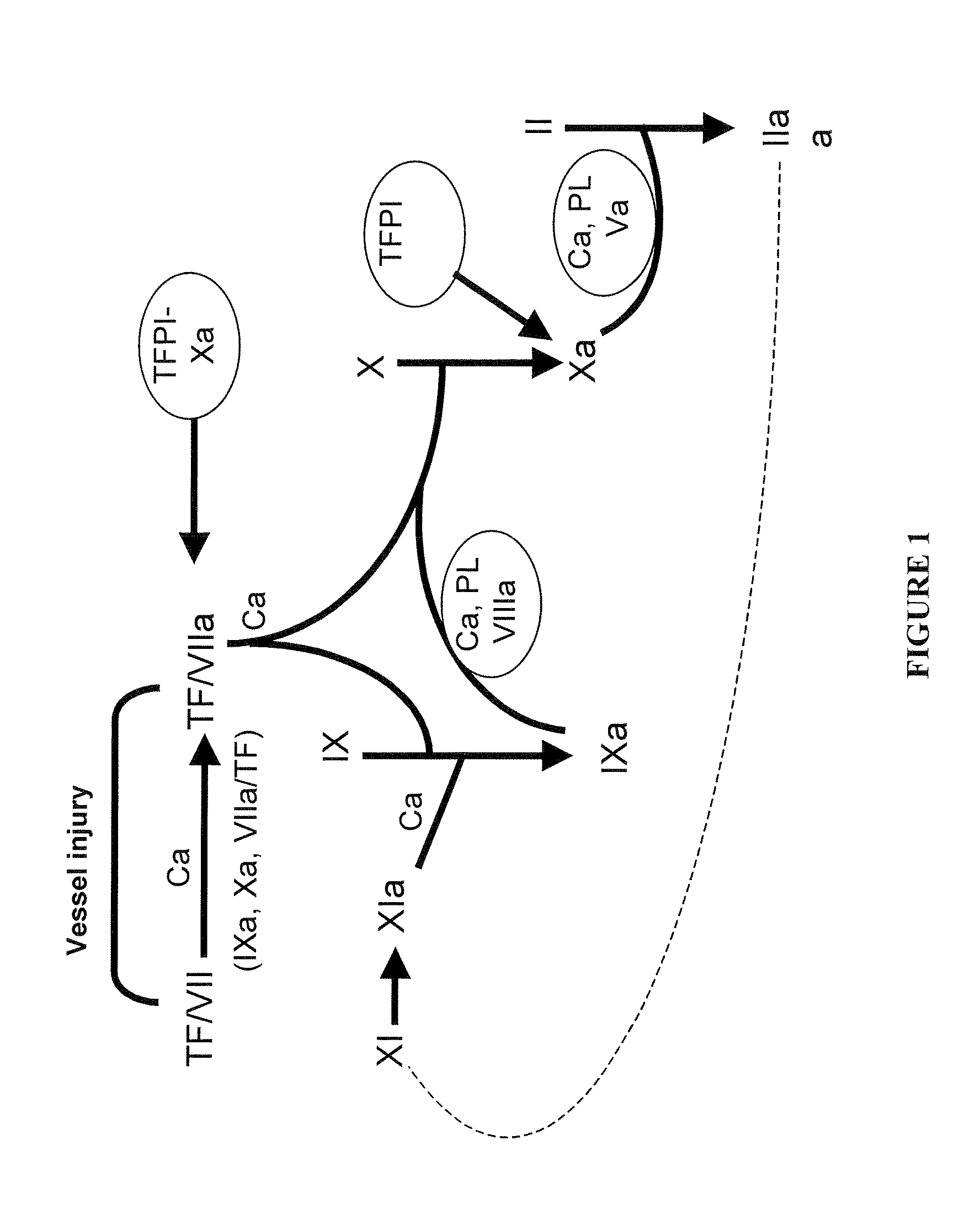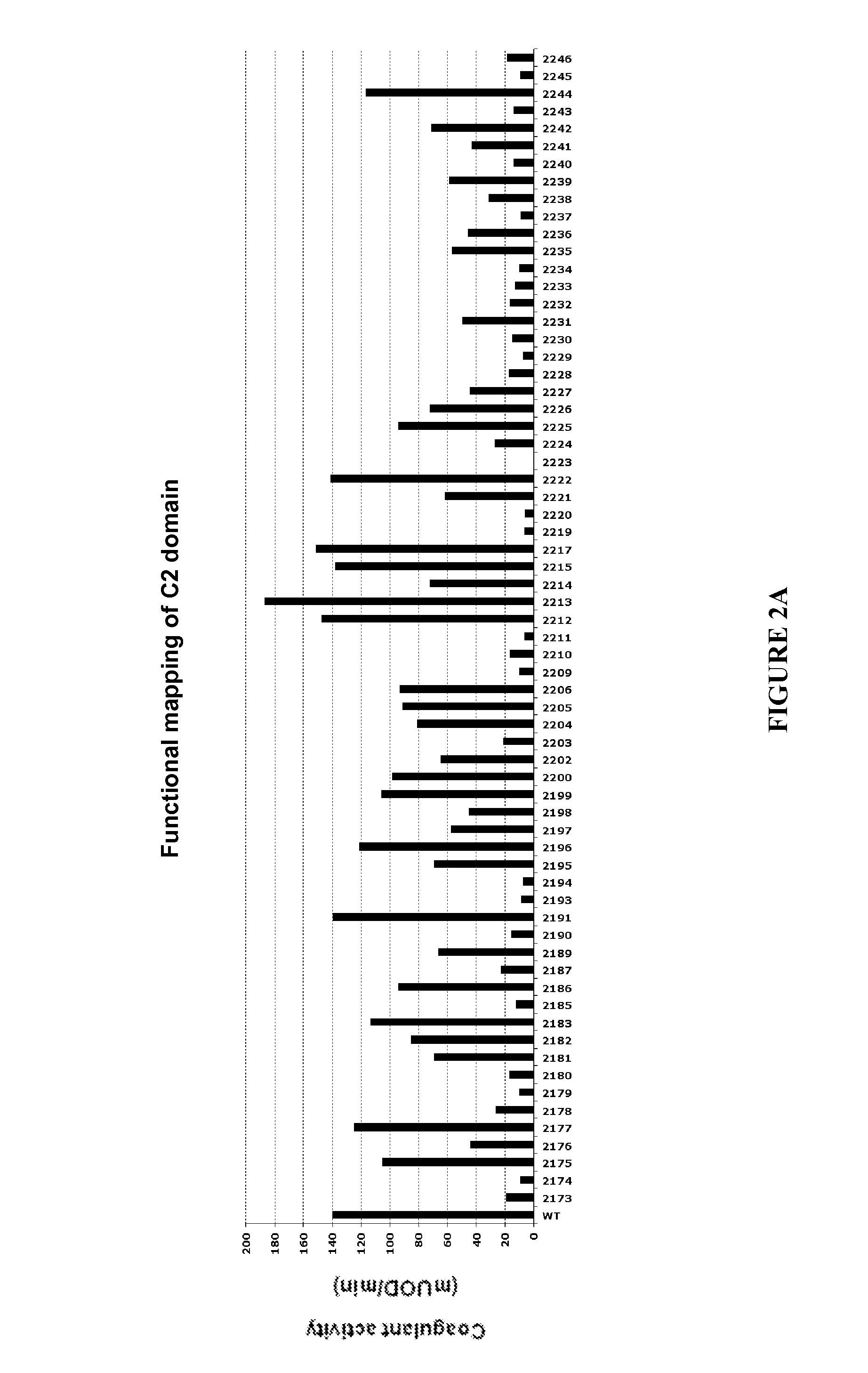VIII factors for the treatment of type A hemophilia
a technology of hemophilia and factor viii, applied in the field of hemophilia a, can solve the problems of failure of the treatment usually used, bleeding is triggered, and platelet aggregates at the si
- Summary
- Abstract
- Description
- Claims
- Application Information
AI Technical Summary
Benefits of technology
Problems solved by technology
Method used
Image
Examples
example 1
[0168]FVIII complementary DNA containing two truncated introns of factor IX at position 1 and 13 (5012 bp) (SEQ ID No. 4) was cloned between the NotI and Xho1 restriction sites in a vector (pcDNA3.1 GS, Invitrogen) allowing expression of the protein in mammalian cells. The pcDNA / FVIII construct corresponded to a 10,439 bp plasmid. This gene comprises the five functional domains A1, A2, A3, C1 and C2 essential for FVIII activity. As it has previously been shown that the B domain does not play any predominant role in the procoagulant function of FVIII, the inventors chose to produce FVIII with a deletion of this domain. The regions coding for the A1 and A2 domains each contain an intron. Insertion of these two intron regions among the coding exons significantly improves the expression of human FVIII. The protein sequence encoded by this gene is given in SEQ ID No. 5.
[0169]The mutagenesis strategy consisted in systematically generating all the single Alanine mutants in...
example 2
Expression of Human FVIII Alanine Mutants in COS-7 Mammalian Cells
[0171]FVIII is usually expressed in mammalian cells (Toole et al., 1984, Nature, 312:342-347; Gitschier et al., 1984, Nature, 312:326-330; Wood et al., 1984, Nature, 312:330-337; Vehar et al., 1984, Nature, 312:337-342; WO8704187; WO 8808035; WO8803558; U.S. Pat. No. 4,757,006).
[0172]In order to transfect COS-7 cells with the native or mutated pcDNA / FVIII constructs, said cells were trypsinized when they reached 90% confluence. The COS-7 cells were reseeded at a 1 / 4 ratio (that is, in order to obtain approximately 25% confluence once they adhered to the surface). Transient transfection of COS-7 cells was carried out in 90 mm culture plates (6 ml per well) when cells reached 70-80% confluence. Transfection was carried out with approximately 6 μg DNA for a volume of 18 μl FuGENE-6 (Roche, Meylan, France).
[0173]Prior to transfection, FuGENE-6 was diluted in serum-free IMDM medium and incubated at room temperature for 5 m...
example 3
Primary Screen: Functional Analysis of Human FVIII Alanine Mutants
[0175]The primary screen correlates to raw coagulant activity determination (FIG. 1) obtained in a same volume of COS-7 cell culture supernatant. Two different assays of clotting activity determination were used in the primary screen, the chronometric assay and the chromogenic assay.
[0176]Chronometric activity was measured following incubation of a dilution of the FVIII molecules to be tested in imidazole buffer in the presence of FVIII-deficient plasma (Stago). Clotting was initiated by addition of calcium and the time to clot formation was determined on a MDA-II apparatus (BioMérieux, Marcy-I'Etoile). The coagulant activity of the 795 Alanine mutants was measured by chronometric assay on a robotic platform of the National Hemophilia Treatment Center (Hospices Civils de Lyon). The chronometric activity of all the Alanine mutants was compared to the activity of a wild-type FVIII used as internal standard for each tran...
PUM
| Property | Measurement | Unit |
|---|---|---|
| concentration | aaaaa | aaaaa |
| concentration | aaaaa | aaaaa |
| concentrations | aaaaa | aaaaa |
Abstract
Description
Claims
Application Information
 Login to View More
Login to View More - R&D
- Intellectual Property
- Life Sciences
- Materials
- Tech Scout
- Unparalleled Data Quality
- Higher Quality Content
- 60% Fewer Hallucinations
Browse by: Latest US Patents, China's latest patents, Technical Efficacy Thesaurus, Application Domain, Technology Topic, Popular Technical Reports.
© 2025 PatSnap. All rights reserved.Legal|Privacy policy|Modern Slavery Act Transparency Statement|Sitemap|About US| Contact US: help@patsnap.com



